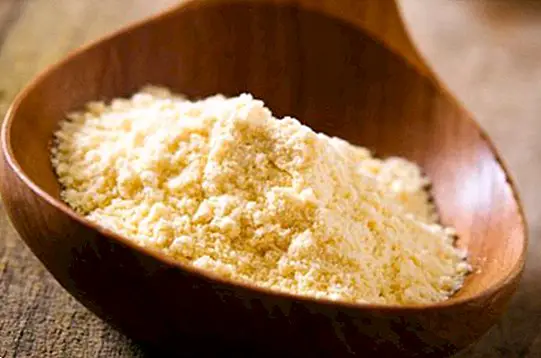Kidneys and ovarian pain
The kidneys They are fundamental organs in the process of both detoxification and purification of our body, mainly for something fundamental: they are responsible for the elimination of those toxins and waste that our body does not need.
Among its main functions, they become in fact one of the main filters of our blood, which purify it by retaining what our organism can take advantage of, and eliminating only what the body must discard through the urine. Therefore it is always appropriate to know how to purify the kidneys, since the purification of these organs at least once a year allows us to purify, clean and care for them naturally.

As you surely know, the kidneys consist of a pair of organs with the shape or appearance of beans or beans. They have a size similar to that of a closed fist (about 13 centimeters long and 8 centimeters wide). And we found them in the back of the abdominal cavity, located just above the waist. In the case of the right kidney, it rests under the liver, while the left kidney is under the diaphragm.
When we talk about Kidneys pain, and above all ovarian pain, we must bear in mind that in reality both discomforts may be related, although it is necessary to have something clear: there is no ovarian pain as such, since they are organs that do not have sensitivity, not causing true pain, and they do have a relationship with certain imbalances related especially to the female reproductive system.
Symptoms of kidney and ovarian pain
The discomfort caused by both problems are actually very clear and defined:
- Sensation of pain in the ovaries: it usually hurts the lower region of the abdomen, just below the region of the navel and pelvis. This pain can be temporary, acute or chronic (depending on the cause that caused its appearance). Cramps may appear in the belly, or pricking sensation at the level of the ovaries, on either side of the belly.
- In the case of kidney pain, the discomfort usually feel especially in the area of the lower back, and especially above the waist, where they are located.

What are your causes?
In many cases when a woman suffers from pain in the ovaries, these discomforts also tend to radiate to the kidneys. For example, it is common that those women who suffer from painful ovulations, among the different discomforts that appear, also find the pain in the kidneys.
Therefore it is always important to go quickly to a gynecologist when the pain is very intense, or when it does not disappear with the passage of time.
We can distinguish the following causes:
- Bad postures:It is the most common and frequent cause. As you can imagine, it is not a pain related to a problem or kidney disease, but a bad position either sitting or carrying too much weight on the back.
- Menstrual pain: It is one of the most frequent causes, which appears by the action of prostagladine (a substance that causes contractions of the uterine musculature).
- Painful ovulation: Unlike the discomfort that appears during menstruation, some women also present pain in the middle of the ovulation cycle.
- Ectopic pregnancy: It is a type of pathological pregnancy, which develops outside the uterine cavity, because the embryonic egg does not migrate to the uterus and is located in the fallopian tubes.
- PID or Pelvic Inflammatory Disease: is a sexually transmitted disease that causes a dangerous inflammation of the reproductive organs. If it is not treated in time it can cause infertility.
Is kidney and ovarian pain a symptom of pregnancy?
In addition to the fact that ectopic pregnancy can cause kidney and ovarian pain, it is common to wonder if a pregnancy that is normal and without problems can also produce these discomforts and pains.
The truth is that, on the one hand, Kidney pain is very common in pregnancy. In fact, it is not usually a pain that is directly related to problems or diseases in the kidneys, but with other discomforts located in nearby areas and that could be much more vulnerable during pregnancy, such as the pelvis or back.

On the other hand, ovarian pain is also common during pregnancy, especially during the first weeks of pregnancy, being quite similar to the pain that is usually felt when menstruation comes.
Of course, although these pains are common and frequent, it is not normal that the pain can be very strong and be accompanied by bleeding. In that case we can find ourselves before a symptom of spontaneous abortion(or equally of ectopic pregnancy), being advisable to go quickly to the doctor.
What to do when the pain of kidneys and ovaries appears?
It is best to always go to your doctor, who (in case you are a general practitioner, or a general practitioner or private family), will refer you to the most appropriate specialist, mainly to the gynecologist.
If for example the discomfort is due to menstruation, you can opt for natural infusions that help to relieve pain: highlights the infusion of cinnamon, the infusion of chamomile and the infusion of evening primrose. You can also apply heat in the belly area, for example using warm compresses.
How to calm the pain of ovaries and kidneys
If the pain of both ovaries and kidneys is not too strong, we must take into account what is the cause that has caused its appearance to enjoy proper treatment.
In case of pregnancy, they are treated as usual discomforts. Of course, as long as the pain is not very strong or accompanied by other alarming symptoms, such as bleeding.
It is useful apply heat or cold in the area. Although it is true that there are no studies that have proven their effectiveness, the truth is that many women with kidney and ovarian pain say they feel some relief when they apply it.
It is also useful avoid standing for a long time or sitting in the same position, and reeducate our position especially when sitting, in order to avoid over arching the spine. This article is published for informational purposes only. It can not and should not replace the consultation with a Physician. We advise you to consult your Trusted Doctor. ThemesKidneys


